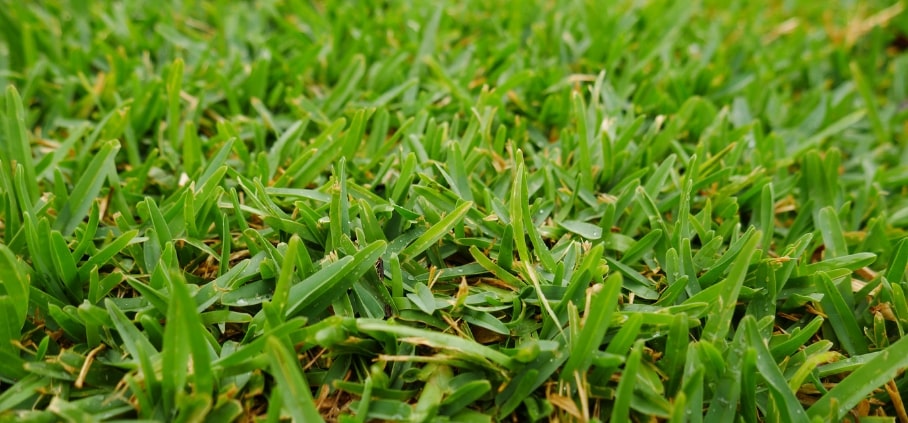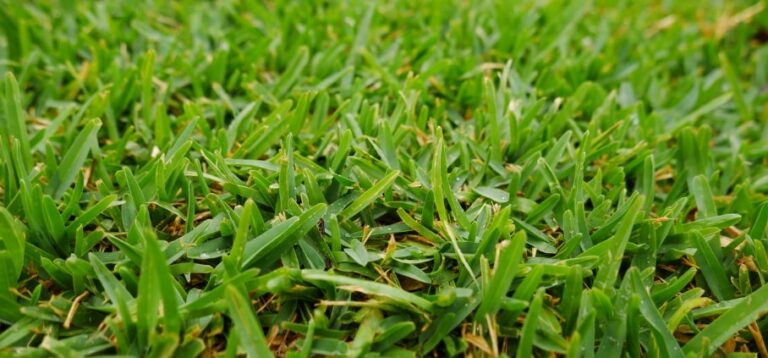Sir Walter Buffalo Grass: Your Complete Guide to Australia’s Favorite Turf
Are you dreaming of a lush, green lawn that stays beautiful year-round? Let’s explore why Sir Walter Buffalo grass might be exactly what you’re looking for. In this comprehensive guide, we’ll walk you through everything you need to know about this remarkable grass variety.
Why Sir Walter Buffalo Grass?
Have you ever wondered why some lawns stay green and beautiful while others struggle? The secret often lies in choosing the right grass variety. Sir Walter Buffalo grass has become Australia’s most trusted turf variety, and for good reason.
Think of Sir Walter as the “set and forget” option for your lawn. It’s like having a low-maintenance pet that makes your home look gorgeous without demanding constant attention. Whether you’re a busy professional, a dedicated gardener, or somewhere in between, this guide will help you understand why Sir Walter might be your perfect lawn solution.
Quick Take: Sir Walter Buffalo grass is ideal if you:
- Want a lawn that stays green year-round
- Have areas with partial shade
- Need grass that’s friendly for kids and pets
- Prefer low-maintenance landscaping
History and Development: The Australian Success Story
Ever wondered how Sir Walter came to be Australia’s favorite grass? Let me take you back to 1997, when this remarkable variety was first introduced to the Australian market. But the story actually begins much earlier.
In the late 1980s, Australian turf researchers faced a challenge: developing a grass variety that could withstand our harsh climate while remaining soft enough for family use. After years of careful selection and breeding, Sir Walter was born – named after Sir Walter Burley Griffin, the architect who designed Canberra.
The Journey of Sir Walter:
- 1980s: Research begins to develop a hardy, shade-tolerant buffalo grass
- 1992-1996: Extensive testing across different Australian climate zones
- 1997: Official release and patenting (PBR 97/298)
- 2000-2010: Becomes Australia’s most popular buffalo grass variety
- 2010-Present: Continuous improvement and quality control
Physical Characteristics: What Makes Sir Walter Special?
Let’s get up close and personal with Sir Walter. What exactly are you getting when you choose this grass? Imagine running your fingers through a dense, soft carpet of green – that’s your first experience with Sir Walter.
The Leaf
Sir Walter’s leaves are broader than traditional buffalo grass, measuring 6-8mm in width. They’re also softer to touch – no more prickly grass between your toes! The deep blue-green color isn’t just for show; it’s an indication of the grass’s high chlorophyll content and health.
The Root System
Below the surface is where the real magic happens. Sir Walter develops an extensive root system that can reach depths of up to 2-3 meters in ideal conditions. Think of it as your lawn’s built-in drought insurance policy.
Growth Pattern
Unlike some grasses that grow straight up, Sir Walter spreads horizontally through stolons (above-ground runners). This creates a dense mat that naturally chokes out weeds and repairs itself when damaged.
Benefits and Considerations: The Complete Picture
Let’s be honest – no grass is perfect for every situation. Here’s what you need to know about Sir Walter’s strengths and limitations to make an informed decision.
What You’ll Love
- Shade Tolerance: Thrives in areas that get as little as 3-4 hours of daily sun. Perfect for those tricky spots under trees or near buildings.
- Drought Resistance: Once established, it can survive extended dry periods. Many homeowners report significant water savings compared to other varieties.
- Wear Resistance: Ideal for families with kids and pets. The dense growth pattern helps it bounce back from heavy use.
- Low Maintenance: Requires less mowing than many other varieties, typically needing attention every 7-14 days during peak growth.
What to Consider
- Initial Investment: Yes, it costs more upfront than some varieties. But consider it an investment that pays off through reduced maintenance and replacement costs.
- Establishment Period: Takes 4-6 weeks to fully establish. During this time, you’ll need to provide consistent care and watering.
- Winter Color: While it stays greener than most warm-season grasses, it may show some browning in severe frost.
Climate Compatibility: Will Sir Walter Thrive in Your Area?
One of the most common questions we hear is “Will Sir Walter grow well in my climate?” The good news is that this versatile grass was specifically developed for Australian conditions – from the tropical north to the temperate south.
Temperature Tolerance
Sir Walter thrives in temperatures between 15-35°C, but don’t worry if your area experiences temperatures outside this range. This hardy grass can survive brief periods of extreme heat and cold, though it may go dormant during severe conditions.
Rainfall and Humidity
Whether you’re in a humid coastal area or a drier inland region, Sir Walter adapts well. It performs best with annual rainfall between 600-1500mm but can handle both higher and lower amounts with proper management.
Living in a frost-prone area? While Sir Walter handles light frosts well, consider installing it with a slight slope for better drainage during winter months.
6. Soil Requirements: Creating the Perfect Foundation
Think of soil as your lawn’s pantry – it needs to be well-stocked with the right nutrients for your grass to thrive. Let’s break down exactly what Sir Walter needs from its soil environment.
Ideal Soil Conditions
- pH Level: 6.0-7.5 (slightly acidic to neutral)
- Soil Type: Well-draining loam soil preferred
- Depth: Minimum 150mm for optimal root development
- Organic Matter: 3-5% content ideal
Common Soil Mistakes to Avoid
Before you plant your Sir Walter turf, watch out for these soil preparation pitfalls:
- Skipping soil testing (it’s worth the small investment!)
- Inadequate soil depth for root development
- Poor drainage preparation
- Ignoring pH adjustment needs
Installation Guide: Setting Your Lawn Up for Success
Ready to transform your yard with Sir Walter? Let’s walk through the installation process step by step. Remember, a proper installation is crucial for long-term success – think of it as building a house. You need a solid foundation!
Step 1: Site Preparation
- Remove existing grass and weeds
- Test soil pH and nutrients
- Add soil amendments as needed
- Level the area, allowing for proper drainage
Step 2: Soil Preparation
- Till soil to 150mm depth
- Remove rocks and debris
- Add organic matter if needed
- Apply starter fertilizer
Step 3: Laying the Turf
- Start from the longest straight edge
- Stagger joints like brick laying
- Ensure tight contact between pieces
- Roll to ensure soil contact
Step 4: Initial Care
- Water immediately after installation
- Keep soil consistently moist
- Avoid heavy traffic for 3 weeks
- First mow when firmly rooted
Maintenance Schedule: Your Year-Round Care Guide
One of Sir Walter’s best features is its low maintenance requirements – but ‘low maintenance’ doesn’t mean ‘no maintenance’. Let’s create a simple care routine that will keep your lawn looking its best.
| Task | Frequency | Notes |
| Mowing | Every 7-14 days during growing season | Keep at 2-4cm height |
| Watering | As needed based on climate | Deep watering preferred over frequent light watering |
| Fertilizing | Every 8-10 weeks during growing season | Use slow-release fertilizer |
| Weed Control | Monitor monthly | Hand remove or spot treat as needed |
| Aeration | Annually | Best done in spring |
Seasonal Care Guide: Adapting to Nature’s Rhythm
Just like we adjust our wardrobe with the seasons, your Sir Walter lawn needs different care throughout the year. Let’s explore what your lawn needs in each season.
Spring (September-November)
- First fertilizer application of the season
- Begin regular mowing as growth accelerates
- Check for winter damage and repair
- Perfect time for aeration
Summer (December-February)
- Increase watering frequency
- Raise mowing height slightly
- Monitor for pest activity
- Continue regular fertilizing
Autumn (March-May)
- Reduce watering frequency
- Lower mowing height gradually
- Apply pre-winter fertilizer
- Clean up fallen leaves
Winter (June-August)
- Minimal watering needed
- Reduce mowing frequency
- Avoid heavy traffic on frosted grass
- Monitor for winter weeds
Troubleshooting: Solutions to Common Problems
Even the hardiest grass can face challenges. Here’s how to identify and solve common issues before they become serious problems.
Yellow Patches
Possible Causes:
- Iron deficiency
- Over-watering
- Dog urine damage
Solutions:
- Apply iron sulfate supplement
- Adjust watering schedule
- Flush affected areas with water
Thinning Areas
Possible Causes:
- Too much shade
- Soil compaction
- Poor nutrition
Solutions:
- Prune overhanging branches
- Aerate soil
- Adjust fertilizer program
Variety Comparison: How Does Sir Walter Stack Up?
Wondering how Sir Walter compares to other popular buffalo grass varieties? Let’s break it down feature by feature.
| Feature | Sir Walter | Palmetto | Sapphire |
| Shade Tolerance | Up to 70% | Up to 60% | Up to 50% |
| Drought Tolerance | Excellent | Good | Good |
| Wear Resistance | High | Medium | Medium-High |
| Maintenance Needs | Low | Medium | Medium |
Cost Analysis: Understanding Your Investment
While Sir Walter might have a higher upfront cost, let’s look at the long-term value proposition.
10-Year Cost Comparison
Initial Costs:
- Turf: $12-15 per square meter
- Installation: $8-10 per square meter
- Soil preparation: $5-7 per square meter
Annual Maintenance Costs:
- Water: 30-40% less than standard varieties
- Fertilizer: 2-3 applications per year
- Mowing: Every 7-14 days during growing season
Frequently Asked Questions
How long does Sir Walter take to establish?
Typically 4-6 weeks for full establishment, though you’ll see the turf taking root within the first 2 weeks.
Can I lay Sir Walter over existing grass?
No, it’s best to remove existing grass and prepare the soil properly for optimal results.
How often should I water my Sir Walter lawn?
After establishment, water deeply once or twice a week rather than frequent light watering. Adjust based on climate and season.
Will Sir Walter grow in full shade?
While it’s the most shade-tolerant buffalo grass, it still needs at least 3-4 hours of direct or filtered sunlight daily.
Expert Analysis: Final Thoughts and Recommendations
After examining every aspect of Sir Walter Buffalo grass, it’s clear why it remains Australia’s most popular turf variety. Its combination of durability, low maintenance
Final Thoughts: Is Sir Walter Right for You?
After diving deep into every aspect of Sir Walter Buffalo grass, you’re now equipped to make an informed decision about your lawn. Remember, the perfect grass variety is the one that matches your specific needs, climate, and lifestyle.
Your Next Steps
If you’re considering Sir Walter for your lawn:
- Assess your yard’s sunlight conditions
- Calculate your budget for initial installation
- Consider your maintenance time availability
- Contact a licensed Sir Walter supplier for a consultation
Still have questions? Feel free to drop them in the comments below, and our lawn care experts will be happy to help!



